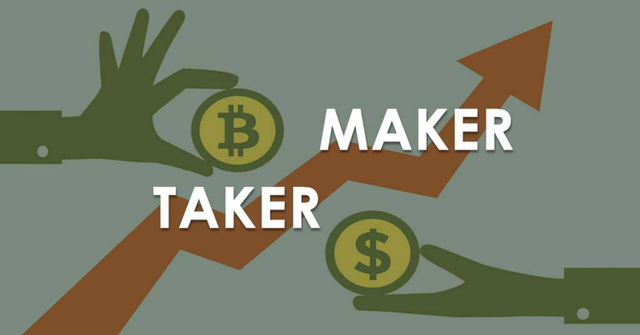The boom of cryptocurrency has gone beyond its circle. Even those who don’t know cryptocurrency well have read the headline news on various social media platforms that NBA icon Stephen Curry bought Bored Ape NFT for $180,000. This bored ape is one of the hit NFT project Bored Ape Yacht Club, a collection of 10,000 apes. The price floor of this collection on OpenSea has come to near 40 ETH at the time of writing.
NFT has undoubtedly added fuel to the boom this summer and the entire crypto market, boosting BTC and ETH to new highs for the past few months. Many traditional speculators who don’t understand NFT well but want to earn as much as NFT participants are once again uplifted.
Both the market of DeFi and CeFi are in a bullish mood. However, according to the Glassnode data, which takes BTC as an example, although the numbers of active addresses and new addresses on the chain show a volatile yet upward trend, they are still far behind the highs of April and May. Faced with the abrupt rise of new DeFi projects and the rat race for the current market share, finding a breakthrough point has become the challenge of traditional centralized exchanges.

Market Makers, the Stability Maintainer of A Trading Ecosystem
When choosing an exchange, users attach importance to many aspects, such as currency diversity, security, and the lineup of derivatives. But what they care about most must be trading depth and liquidity, and the latter functions as the foundation of every effective trading market. It is no exaggeration to say that, liquidity is also the soul of an exchange, the breakthrough point, and one of the biggest challenges facing the exchange.
As an old saying goes, when the water is deep enough, the boats are safe to go. Only exchanges with good liquidity and enough trading depth can ensure a small bid-ask spread and free, open transactions. And it is market makers who play an important role in providing liquidity for the trading market. Thus it becomes important for every exchange to attract more high-quality market makers by endowing them with various preferential policies and rights.
Both individuals and institutions can become market makers, but market making still requires much technique and even comes with certain risks in unilateral market conditions. The high requirements for market makers’ capital size, strategic choices, and stability in market-making procedures have raised the threshold for participation.
Take Binance. One of the prerequisites for a spot market maker is that the trading volume within 30 days is not less than 1,000 BTC. Calculated based on the BTC price of about 50,000 US dollars at the time of writing, it is equivalent to $50 million.
KuCoin requires applicants to have a transaction volume of more than 5,000 BTC in the past 30 days, which is equivalent to a staggering $250 million.
Let’s take a look at CoinEx, which has gained momentum on all fronts since the beginning of this year. Its threshold for market makers is $10 million in the monthly trading volume, the lowest among the three, thus allowing many excellent emerging market makers, both institutional and individual, to enter the market.
The Market Maker’s Benefits on Different Exchanges
By placing bid and ask orders with price spreads, market makers maintain market liquidity, optimize bid/ask spreads, and facilitate trades for the average user. At the same time, they also profit from the price spreads of ongoing transactions.
Dealing with frequent and large-scale transactions, market makers tend to be very sensitive to fees as high service fees will seriously encroach on their profit margins. Let us compare the market making fees of the above three exchanges, without considering discounts of the platform-based token.
Of the three, only CoinEx has released the tiered fee discounts. On CoinEx, the LV1 Maker and Taker fees are 0.04% and 0.09%, while on the highest level (LV5), Maker and Taker fees are 0.00% and 0.05%. For perpetual market makers, the Maker fee is 0.00%, and market makers of LV3 and above enjoy negative fees ranging from -0.005% to -0.015%.
Commission reward from exchanges is also a major source of profit for market makers. CoinEx’s commission ratio is 0.01% to 0.02%, whereas Binance and KuCoin have no specific standards for commissions.
Though thresholds, fees, and commissions remain the most important considerations for market makers, value-added services are also crucial as they determine the user experience. For example, of three exchanges, only CoinEx has a specific webpage for market makers (https://www.coinex.com/activity/market-maker) where all services and standards are clearly listed. Market makers can obtain all relevant information from this page alone, without the need for further inquiries. Moreover, this further ensures the rights and interests of market makers.
Apart from the key indicators, CoinEx is also way ahead of its peers in terms of exclusive services. Furthermore, CoinEx has even launched exclusive events for market makers. What this shows is that CoinEx respects and values market makers. From a technical perspective, CoinEx is known for its stable and fast API services and the strong protection of asset security, which reassures the big market makers by minimizing the risks.
For market makers, compared to the well-established conventional capital market, the crypto market remains an unexplored terrain, which will welcome more professional institutions. With incredible benefits and incentives, CoinEx’s market maker program is an indication that the exchange hopes to grow alongside market makers as it continues to evolve. Together, CoinEx and market makers will reinforce each other and provide improved services. For market makers, CoinEx is undoubtedly the best choice.